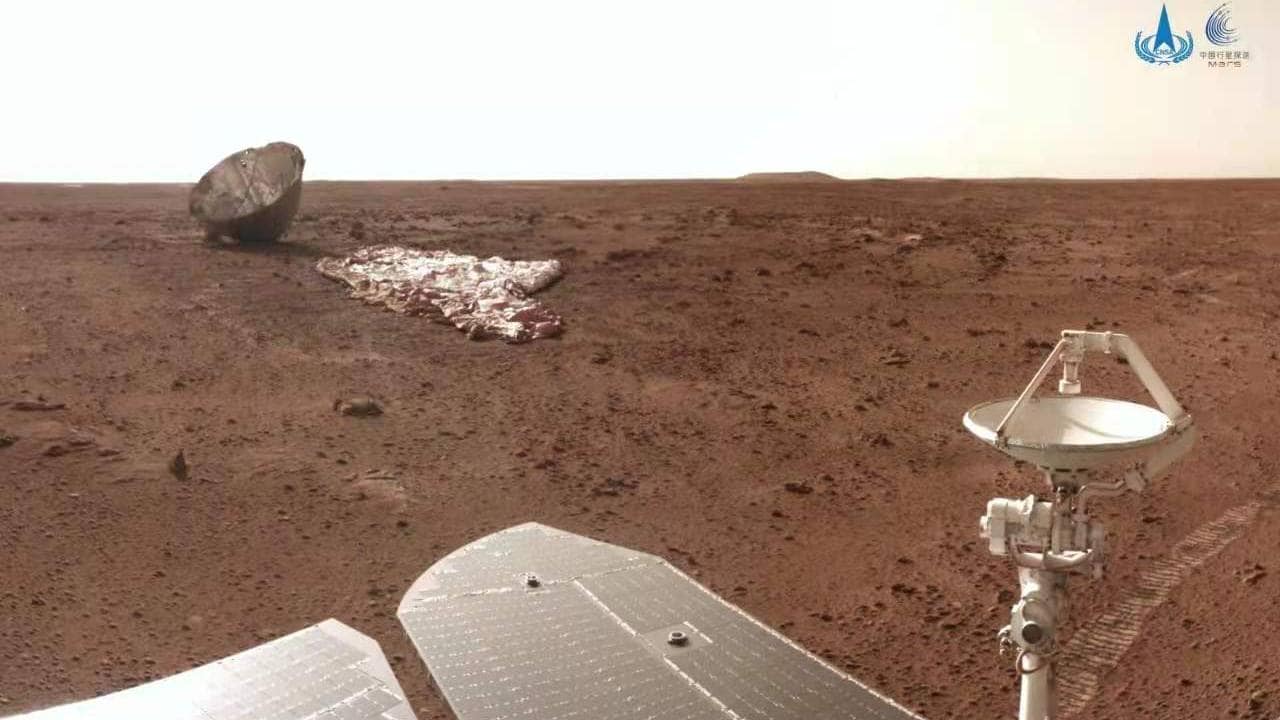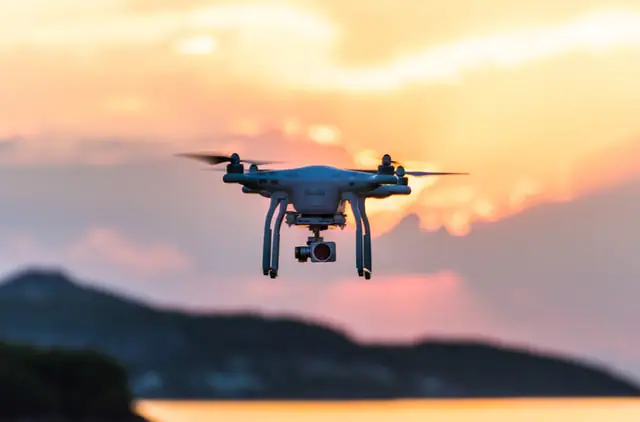FP TrendingJul 19, 2021 16:27:39 IST
The Zhurong Rover recently sent back multiple images of its parachute and protective shell that helped in its landing on Mars. Developed by the China National Space Administration (CNSA), Zhurong has been travelling on Mars for the past 63 Martian days. One Martian day is around 40 minutes longer than one day on Earth.

The burnt yet unbroken protective shell (far left), the deflated parachute (far right) and part of China’s Mars rover. /China National Space Administration
As reported by Space.com, Zhurong’s parachute and protective shell fell a short distance away from the Utopia Planitia and have now been found by the rover. The camera on the rover has captured black and white images of this equipment along with that of its own tracks. The publication further mentions that a coloured image of the parachute was also captured by the camera on the Zhurong rover.
One can also see the burnt yet unbroken protective shell and parts of the rover reported CGTN. Zhurong was 30 meters from the shell and 350 meters away from the landing site.
Peter Grindrod from the Natural History Museum, London told Space News that the orbit’s images close to the landing site should be of interest to scientists as they show Transverse Aeolian Ridges (TARs).
Until Saturday, 17 July at 11 pm CST (8.30 pm IST), the rover has driven 509 metres on the Martian surface.

Zhurong’s wheel tracks on Mars. /China National Space Administration
The Tianwen-1 mission was launched on 23 July 2020. The mission consists of an orbiter, a lander, and a rover. The lander-rover duo had landed on Mars on 15 May this year at a region in the northern hemisphere of Mars, known as Utopia Planitia.
The Tianwen-1 orbiter has been in orbit for 359 days and is around 375 million kilometres from Earth. The orbiter is a one-way relay communication satellite and the delay between the communication is nearly 21 minutes. The messages from the Zhurong rover are transferred to the orbiter and relayed to Earth.
Both the Zhurong Rover and Tianwen-1 orbiter are in good condition and operating normally.
The Zhurong rover is expected to complete 92 Earth days on Mars. It is expected to collect data about its geography and analyse the rock samples on the planet.










